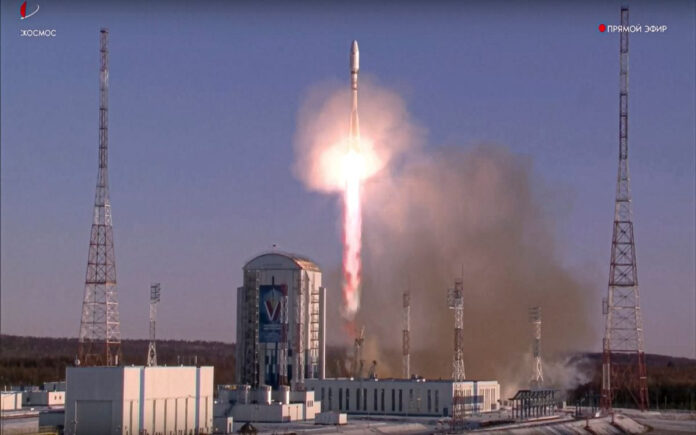Moscow: Russia’s space agency Roscosmos launched a Soyuz rocket from the Vostochny Cosmodrome early Tuesday, carrying a series of satellites designed for diverse functions. Among these, the primary payload included two Ionosfera-M satellites tasked with monitoring space weather around Earth, as well as 53 smaller satellites, which featured two high-profile units from Iran.
The two Ionosfera-M satellites, weighing 430 kilograms each, are part of a broader effort to build a system for observing and studying Earth’s ionosphere. Positioned in an orbit of approximately 820 kilometers (510 miles), they will contribute to a four-satellite constellation planned by Roscosmos, with the final two satellites scheduled for deployment by 2025. The ionosphere, a complex region of Earth’s atmosphere extending 50 to 400 miles (80 to 644 kilometers) above the planet’s surface, is critical for understanding various space-weather effects, as noted by NASA.
This mission’s secondary payloads included small satellites from various countries, including Iran. The Iranian contribution consisted of the Kowsar satellite, equipped with high-resolution imaging capabilities, and the Hodhod satellite, a compact communications unit. The launch of these Iranian satellites highlights ongoing cooperation between Russia and Iran in the space sector, following Russia’s February launch of an Iranian research satellite aimed at mapping Iran’s topography.
Also Read | Modi and Trudeau Condemn Violence at Hindu Temple Amid India-Canada Tensions
Additionally, among the international satellites was Druzhba ATURK, the first student satellite created collaboratively by Russian and Chinese institutions, symbolizing a growing academic partnership in space exploration.
Also Read | Trump Vows to Impose Tariffs on Mexico and China Over Fentanyl Crisis if Elected



